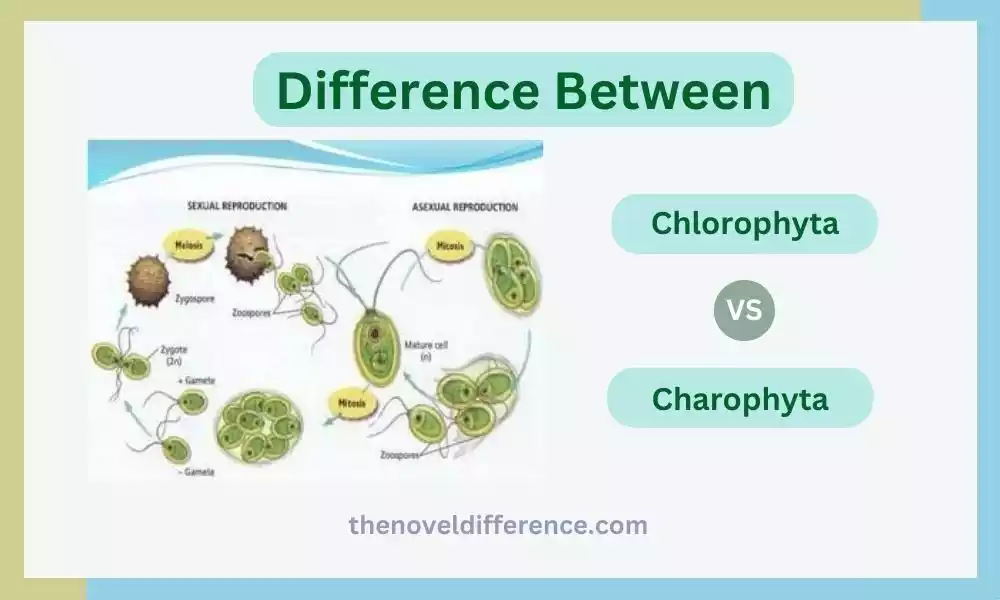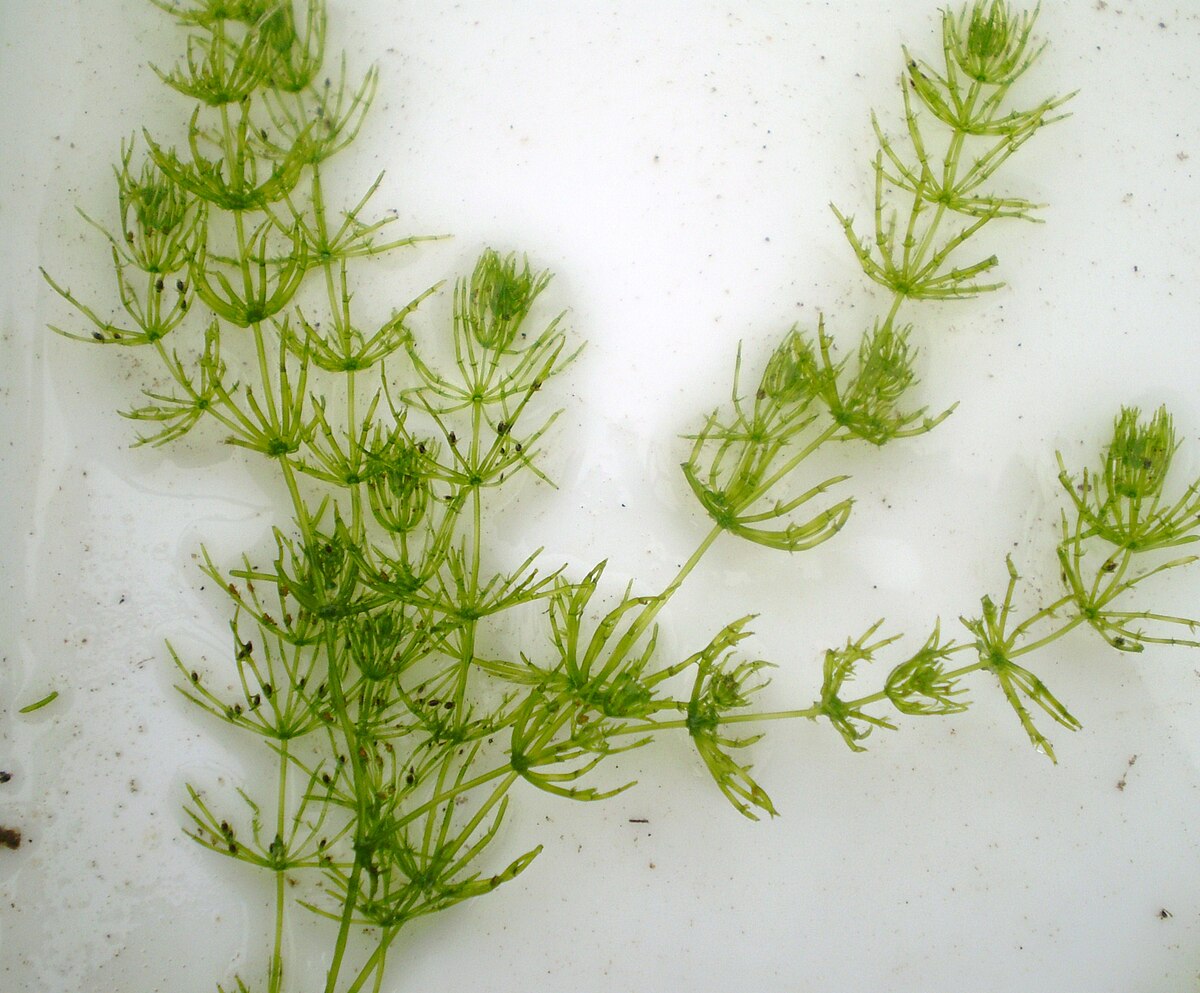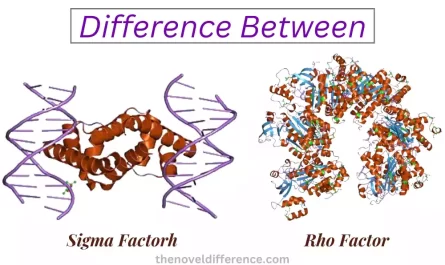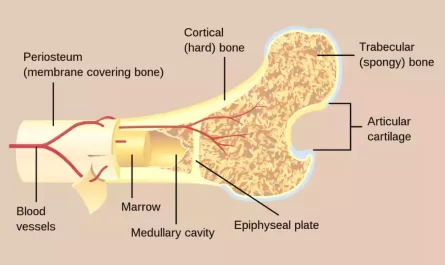Green algae are a diverse group of photosynthetic organisms that play a crucial role in ecosystems around the world. Two major divisions of green algae are Chlorophyta and Charophyta. While they share certain characteristics, key differences set them apart. We will delve into the dissimilarities between Chlorophyta and Charophyta, shedding light on their unique features, habitats, and evolutionary significance.
Importance of understanding the difference between Chlorophyta and Charophyta
Understanding the difference between Chlorophyta and Charophyta is important for several reasons:
1. Taxonomy and classification: Chlorophyta and Charophyta belong to the division of green algae. They represent distinct lineages within this division. Understanding their taxonomic differences helps in accurately categorizing and classifying these organisms, providing a foundation for further research and study.
2. Morphological and physiological characteristics: Chlorophyta and Charophyta exhibit differences in their cellular structure, cell wall composition, and reproductive structures. By studying and comparing these features, scientists can gain insights into the evolutionary adaptations and ecological roles of these algae.
3. Ecological distribution: Chlorophyta and Charophyta occupy different habitats and exhibit varying ecological preferences. Chlorophyta, for example, is found in diverse environments, including freshwater, marine, and terrestrial habitats. Charophyta, on the other hand, are predominantly freshwater algae. Understanding their ecological distribution helps in comprehending their roles in ecosystem dynamics and their responses to environmental changes.
4. Evolutionary relationships: Exploring the differences between Chlorophyta and Charophyta provides valuable information about their evolutionary divergence and relationships with other green algae and land plants. These insights contribute to our understanding of plant evolution and the transition from aquatic to terrestrial habitats.
5. Ecological and economic importance: Both Chlorophyta and Charophyta play significant ecological roles. Chlorophyta contributes to primary production, nutrient cycling, and food webs in aquatic and terrestrial ecosystems. Charophyta, in particular, forms dense vegetation in freshwater habitats, providing habitats for various organisms. Moreover, green algae have economic uses such as in biotechnology, biofuels, and food production. Distinguishing between Chlorophyta and Charophyta helps in harnessing their unique properties and potential applications.
understanding the difference between Chlorophyta and Charophyta enhances our knowledge of these algal groups’ evolutionary history, ecological functions, and practical applications. It provides a foundation for further research, conservation efforts, and sustainable utilization of their resources.
Definition of Chlorophyta and Charophyta
Chlorophyta: Chlorophyta is a division of green algae, comprising a diverse group of photosynthetic organisms. They are primarily aquatic but can also occur in moist terrestrial environments. Chlorophyta includes a wide range of species, from microscopic unicellular forms to large multicellular seaweeds. They possess chlorophyll a and b, which give them a green coloration, and they conduct photosynthesis using sunlight and carbon dioxide.
Charophyta: Charophyta is another division of green algae, closely related to land plants. They are predominantly freshwater algae, commonly found in lakes, ponds, and slow-moving rivers. Charophyta shares several characteristics with land plants, including the presence of specialized structures like oogonia and antheridia for sexual reproduction. They also possess a cell wall composed of cellulose and have a distinctive spiral-shaped arrangement of chloroplasts.
Chlorophyta and Charophyta are divisions within the group of green algae. Chlorophyta encompasses a wide range of aquatic and terrestrial species, while Charophyta primarily consists of freshwater algae that share characteristics with land plants.
What is Chlorophyta?
Chlorophyta is a division of green algae, comprising a diverse group of photosynthetic organisms. It is one of the largest divisions within the plant kingdom, with thousands of known species. Chlorophyta is primarily aquatic but can also occur in moist terrestrial environments such as damp soil or tree bark.
Members of Chlorophyta exhibit a wide range of forms and sizes. They can be unicellular, colonial, filamentous, or multicellular and can vary from microscopic organisms to large seaweeds. The characteristic green color of Chlorophyta is due to the presence of chlorophyll a and b, which are the primary pigments responsible for photosynthesis.
Chlorophyta algae are capable of photosynthesizing, converting sunlight and carbon dioxide into energy-rich organic molecules, while releasing oxygen as a byproduct. They play a crucial role in aquatic ecosystems by contributing to primary production, oxygen production, and nutrient cycling. They are found in various aquatic habitats, including freshwater, marine, and brackish environments.
Some notable examples of Chlorophyta include the green algae Chlamydomonas, Spirogyra, Ulva (sea lettuce), and Volvox. These algae have diverse ecological functions and can serve as important food sources for aquatic organisms. Chlorophyta also has economic uses, such as in biotechnology, food production, and as indicators for water quality assessment.
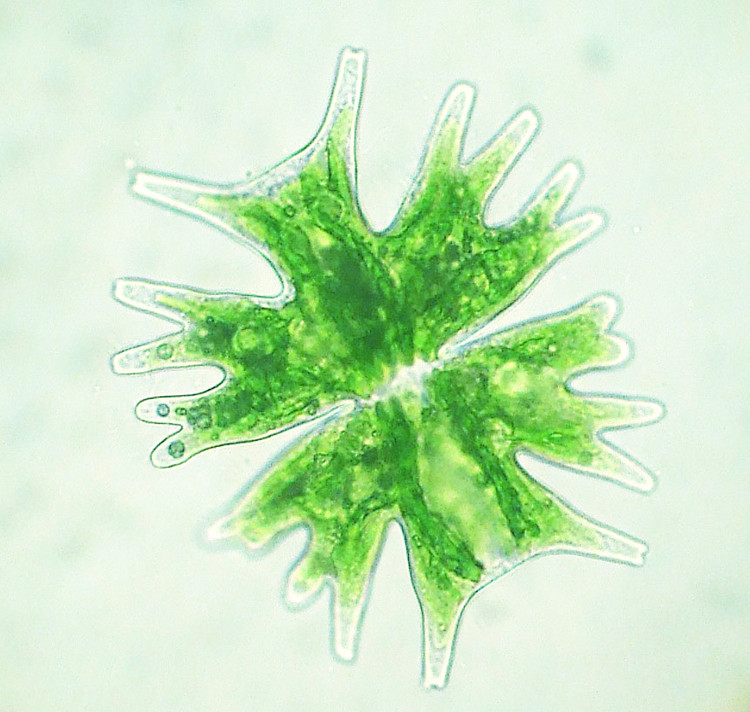
Chlorophyta is a division of green algae characterized by their photosynthetic ability, diverse forms, and green coloration. They play vital roles in aquatic ecosystems and have practical applications in various fields.
Major classes and examples
Chlorophyta encompasses several major classes, each containing distinct groups of green algae.
Some of the notable classes and examples within Chlorophyta include:
1. Chlorophyceae: This class consists of the largest and most diverse group of green algae.
Examples include:
a. Chlamydomonas: Unicellular green algae found in freshwater habitats.
b. Volvox: Colonial green algae forming spherical colonies with numerous flagellated cells.
c. Spirogyra: Filamentous green algae characterized by spiral-shaped chloroplasts.
2. Ulvophyceae: This class includes seaweeds commonly found in marine and brackish water environments.
Examples include:
a. Ulva (sea lettuce): Green algae with flat, leaf-like structures commonly found in intertidal zones.
b. Enteromorpha: Tubular or sheet-like green algae found in marine environments.
c. Caulerpa: Marine green algae with complex branching structures.
3. Trebouxiophyceae: This class comprises various green algae found in diverse habitats.
Examples include:
a. Pleurococcus: Unicellular or colonial green algae commonly found on tree bark, rocks, or soil.
b. Elliptochloris: Unicellular green algae commonly found in soil and terrestrial habitats.
c. Scotiellopsis: Unicellular or colonial green algae found in freshwater and terrestrial environments.
4. Charophyceae: While Charophyceae is a separate class, it is closely related to Chlorophyta and is sometimes considered a distinct division of green algae.
Notable examples include:
a. Chara: Freshwater algae with a branching, filamentous structure, and a calcified outer layer.
b. Nitella: Freshwater algae similar to Chara but lacking calcification.
c. Coleochaete: Green algae with a plant-like body that grows on moist soil or rocks.
These are just a few examples of the major classes and representative genera within Chlorophyta. The division encompasses a vast array of green algae with diverse forms, structures, and ecological roles, contributing to the overall biodiversity of the group.
What is Charophyta?
Charophyta is a division of green algae that is closely related to land plants. It is a small but significant group of algae, comprising freshwater species that share several characteristics with land plants. Charophyta is often considered a sister group to land plants, as they possess features that are thought to be ancestral or closely related to those found in early plants.
Members of Charophyta are primarily found in freshwater habitats, such as lakes, ponds, and slow-moving rivers. They have adaptations to survive in these environments, including the ability to tolerate low nutrient levels and fluctuating water conditions.
One of the distinguishing features of Charophyta is the presence of specialized reproductive structures. They produce reproductive cells called gametes within structures known as oogonia (female) and antheridia (male). Fertilization occurs when the male gametes swim toward the female gametes, leading to the formation of zygotes.
Charophyta also possesses a unique cell wall composition. Their cell walls contain cellulose, a polysaccharide that is also a major component of land plant cell walls. This cellulose-rich cell wall structure distinguishes them from other divisions of green algae.
Notable examples of Charophyta include:
1. Chara: Commonly known as stonewort, Chara is a genus of filamentous green algae found in freshwater habitats. They have a complex, branching structure and often form dense underwater vegetation.
2. Nitella: Nitella is a genus of green algae that closely resembles Chara. They are commonly found in freshwater habitats and have a long, thread-like structure with whorls of branchlets.
3. Coleochaete: Coleochaete is a genus of green algae that grows on moist soil, rocks, or other surfaces. They have a flattened, plant-like body and are often found in terrestrial or semi-aquatic environments.
Charophyta, with their evolutionary significance and resemblance to land plants, is of particular interest to researchers studying plant evolution and the transition from aquatic to terrestrial habitats. They provide valuable insights into the origins of key traits and adaptations seen in land plants.
Ecological and Economic Importance
Ecological Importance:
1. Primary Production: Both Chlorophyta and Charophyta are primary producers in aquatic ecosystems, converting sunlight and carbon dioxide into organic compounds through photosynthesis. They play a crucial role in the food web by providing a source of energy for other organisms.
2. Oxygen Production: Photosynthesis by Chlorophyta and Charophyta results in the release of oxygen as a byproduct, contributing to oxygen levels in aquatic environments. This oxygen is vital for the survival of marine organisms.
3. Nutrient Cycling: Green algae, including Chlorophyta and Charophyta, participate in nutrient cycling. They take up nutrients such as nitrogen and phosphorus from the water, incorporating them into their tissues. When algae die or are consumed by other organisms, these nutrients are released back into the ecosystem, contributing to the nutrient balance.
4. Habitat and Shelter: Certain species of Chlorophyta and Charophyta form dense vegetation, providing habitats, shelter, and food sources for a variety of aquatic organisms. They create niches for small invertebrates, fish, and microorganisms, enhancing biodiversity in aquatic environments.
Economic Importance:
1. Biotechnology and Research: Some species of Chlorophyta have economic importance in biotechnology and scientific research. They are studied for their potential applications in areas such as biofuel production, pharmaceuticals, and bioremediation.
2. Food Production: Certain Chlorophyta species, such as seaweeds from the division Ulvophyceae, are consumed as food by humans. They are used in various culinary dishes, as ingredients in sushi, salads, and soups, and as a source of vitamins, minerals, and dietary fiber.
3. Water Quality Indicators: Charophyta, with its sensitivity to water conditions, is used as an indicator of water quality. Their presence or absence in freshwater ecosystems can indicate the health and ecological status of the water body. Monitoring Charophyta populations helps assess the impact of pollution and human activities on aquatic environments.
4. Ecological Assessment: Both Chlorophyta and Charophyta are utilized in ecological studies and environmental monitoring. Their distribution, abundance, and community structure provide valuable information about the health and functioning of aquatic ecosystems.
Chlorophyta and Charophyta play significant ecological roles in aquatic ecosystems, contributing to primary production, nutrient cycling, and habitat provision. They also have economic importance in areas such as biotechnology, food production, and ecological research.
Difference Between Chlorophyta and Charophyta
Chlorophyta and Charophyta are two divisions of green algae, and they share similarities.
There are several key differences between them:
1. Habitat: Chlorophyta species can be found in various environments, including freshwater, marine, and terrestrial habitats. Charophyta, on the other hand, are predominantly freshwater algae, although they can also tolerate brackish water conditions.
2. Cell Wall Composition: The cell walls of Chlorophyta are primarily composed of cellulose, as is the case with most green algae. Charophyta has a unique cell wall composition that includes cellulose and additional compounds such as pectin and sometimes calcium carbonate. This cell wall composition resembles that of land plants more closely.
3. Morphological Characteristics: Chlorophyta exhibits a wide range of morphological forms, including unicellular, colonial, filamentous, and multicellular forms. Charophyta also has diverse morphological forms but are commonly filamentous or have plant-like structures with branching patterns.
4. Reproductive Structures: In terms of reproductive structures, Chlorophyta often has various modes of reproduction, including asexual reproduction through fragmentation and sexual reproduction through the production of motile gametes. Charophyta has specialized reproductive structures, such as oogonia (female structures) and antheridia (male structures), within which gametes are produced. This type of sexual reproduction is more similar to that of land plants.
5. Evolutionary Relationships: Charophyta is considered the closest relative of land plants among green algae. They share several features and characteristics that are thought to be ancestral or closely related to those found in land plants. Chlorophyta, while still green algae have a more distant evolutionary relationship to land plants compared to Charophyta.
6. Ecological Roles: Chlorophyta species contribute to primary production, oxygen production, and nutrient cycling in various aquatic and terrestrial ecosystems. Charophyta, with their complex filamentous structures, often form dense vegetation in freshwater habitats, providing habitats and food sources for various organisms.
The main differences between Chlorophyta and Charophyta lie in their habitat preferences, cell wall composition, reproductive structures, morphological characteristics, evolutionary relationships, and ecological roles. While both divisions are green algae, Charophyta shows closer similarities to land plants and plays a significant role in our understanding of plant evolution and the transition from aquatic to terrestrial environments.
Comparison Chart
Here is a comparison chart highlighting the main differences and similarities between Chlorophyta and Charophyta:
| Chlorophyta | Charophyta |
|---|---|
| Diverse: freshwater, marine, terrestrial | Predominantly freshwater can tolerate brackish water |
| Cellulose | Cellulose, pectin, and sometimes calcium carbonate |
| Varied: unicellular, colonial, filamentous, multicellular | Primarily filamentous, plant-like structures with branching |
| Various modes, including asexual and sexual reproduction with motile gametes | Specialized structures (oogonia and antheridia) for sexual reproduction |
| More distant to land plants | Closely related to land plants, considered the sister group |
| Primary production, nutrient cycling in aquatic and terrestrial ecosystems | Formation of dense vegetation in freshwater habitats, habitat provision |
| Eukaryotic with nucleus and organelles | Eukaryotic with nucleus and organelles |
| Possess chloroplasts for photosynthesis | Possess chloroplasts for photosynthesis |
| Chlorophyll a and b, accessory pigments | Chlorophyll a and b, accessory pigments |
| Biotechnology, biofuels, food production | Ecological research, water quality indicators |
This comparison chart highlights the key similarities and differences between Chlorophyta and Charophyta across various aspects, including their habitat, cell wall composition, reproductive structures, evolutionary relationships, ecological roles, and economic importance.
Similarities between Chlorophyta and Charophyta
Chlorophyta and Charophyta, as divisions of green algae.
Share several similarities:
1. Chloroplasts and Photosynthesis: Both Chlorophyta and Charophyta possess chloroplasts, which contain chlorophyll pigments responsible for photosynthesis. This allows them to capture sunlight and convert it into chemical energy, producing oxygen as a byproduct.
2. Green Coloration: Both divisions exhibit a green coloration due to the presence of chlorophyll a and b, along with other accessory pigments, which help absorb light energy for photosynthesis.
3. Cell Structure: Chlorophyta and Charophyta are eukaryotic organisms, meaning their cells have a membrane-bound nucleus and other organelles. They have similar cellular structures and functions, including the presence of mitochondria for energy production.
4. Cell Division: Both divisions undergo cell division through mitosis, a process that results in the replication and division of genetic material into two daughter cells.
5. Shared Traits with Land Plants: Charophyta, in particular, share several characteristics with land plants, such as the presence of cellulose in their cell walls and the formation of specialized reproductive structures called oogonia and antheridia, similar to the structures found in early plants.
6. Ecological Importance: Both Chlorophyta and Charophyta play crucial ecological roles. They contribute to primary production, oxygen production, and nutrient cycling in various aquatic ecosystems. They serve as food sources for many organisms, provide habitats for small invertebrates and microorganisms, and help stabilize aquatic environments.
7. Economic Uses: Certain species from both divisions have economic importance. For example, certain Chlorophyta species are used in biotechnology, biofuels, and food production. Charophyta species have applications in ecological research and as indicators of water quality.
While there are notable differences between Chlorophyta and Charophyta, their shared characteristics reflect their common evolutionary heritage as green algae and contribute to their ecological and biological significance.
Evolutionary Relationships
The evolutionary relationships of Chlorophyta and Charophyta provide insights into the origins and diversification of green algae and land plants.
Here are some key points regarding their evolutionary relationships:
1. Common Ancestry: Chlorophyta and Charophyta are both divisions of green algae, sharing a common ancestry. They belong to the larger group of organisms known as Viridiplantae, which includes green algae and land plants.
2. Sister Group to Land Plants: Charophyta, specifically the group known as Charophyceae, is considered the closest living relative of land plants. They share several traits and characteristics with land plants, suggesting a common ancestor and providing important clues about the transition from aquatic to terrestrial environments.
3. Transitional Features: Charophyta exhibits several characteristics that are considered transitional between green algae and land plants. These include the presence of cellulose in their cell walls, the formation of specialized reproductive structures (oogonia and antheridia), and the development of complex multicellular forms with differentiated tissues.
4. Shared Genetic Features: Studies comparing the genomes of Charophyta and land plants have identified shared genetic features, reinforcing their close evolutionary relationship. These shared genes are involved in various processes, including development, reproduction, and responses to environmental cues.
5. Diversification of Green Algae: Chlorophyta represents a diverse and widespread group of green algae that have undergone significant diversification. While they have a more distant evolutionary relationship to land plants compared to Charophyta, Chlorophyta still plays a crucial role in understanding the evolutionary history of green algae and the adaptations that allowed them to thrive in various habitats.
Studying the evolutionary relationships between Chlorophyta, Charophyta, and land plants helps shed light on the origins and evolutionary innovations that led to the colonization of terrestrial environments. The similarities and differences among these groups provide valuable insights into the transition from aquatic to terrestrial lifestyles, the development of complex multicellularity, and the evolution of key traits seen in land plants today.
Conclusion
Chlorophyta and Charophyta represent distinct divisions within the fascinating world of green algae. While they share common features such as cellulose cell walls and chloroplasts, their reproductive methods, and habitats set them apart. Understanding the differences between Chlorophyta and Charophyta contributes to our knowledge of the diversity and ecological significance of green algae.

